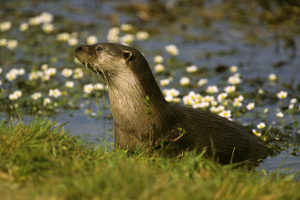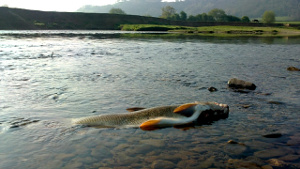Otter (Lutra lutra)


Otter were once widespread in the Wye, but populations declined sharply during the 1960s and 1970s due to pollution and persistent pesticides, exacerbated by hunting and habitat loss. At present, the majority of the otter population in Great Britain occurs in Scotland and Wales. The otter is still scarce over much of England, where the highest concentrations are in the south-west. However, recent surveys suggest that the otter population is recovering well.
The Wye holds one of the densest and most well-established otter populations in Britain. The river has bank-side vegetation cover, abundant food supply, clean water and undisturbed areas of dense scrub suitable for breeding, making it particularly favourable as otter habitat. The Wye’s population remained even during the lowest point of the UK decline, confirming that the site is particularly favourable for this species and the population likely to be highly stable.
The River Usk is also an important site for otters. They are believed to be using most parts of the main river from Newport upstream and in recent years signs of otters have increased. The upper Usk may have acted as a ‘refuge’ during the decline of the 1950s, and had subsequently acted as a ‘source’ population for recolonisation of south-east Wales.
Otters can be seen swimming or diving and searching for food. Keep an eye out whenever you come across vegetated river banks, islands, reedbeds and woodland, which can also be used for foraging, breeding and resting. Otters feed on fish, large invertebrates (e.g. crayfish) and even ducklings. Quite often a half-eaten fish seen on the banks or in the shallows is the clearest sign an otter has been in the vicinity. The decline of one its favourite food items, the European eel, is a new challenge for the species however.
